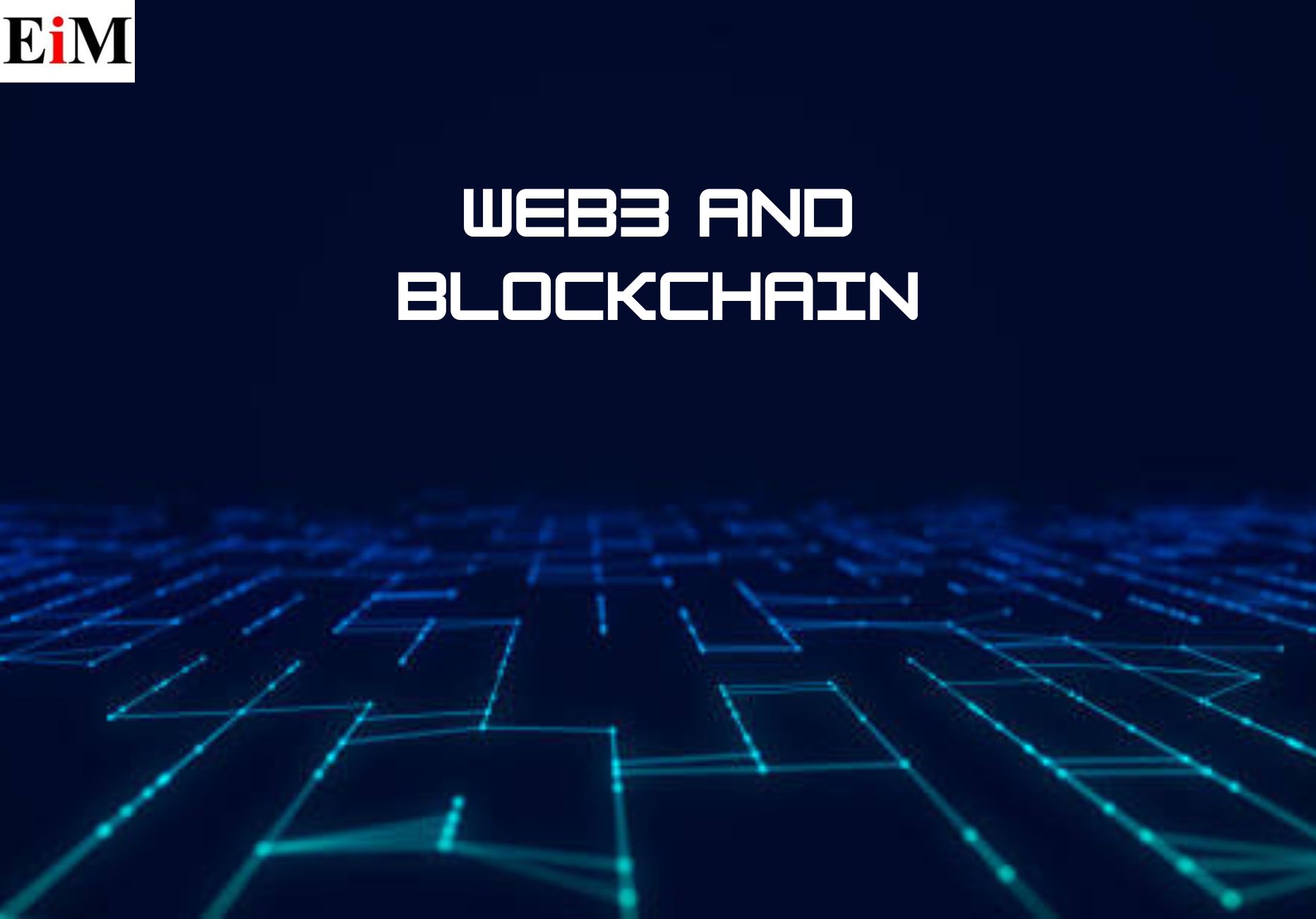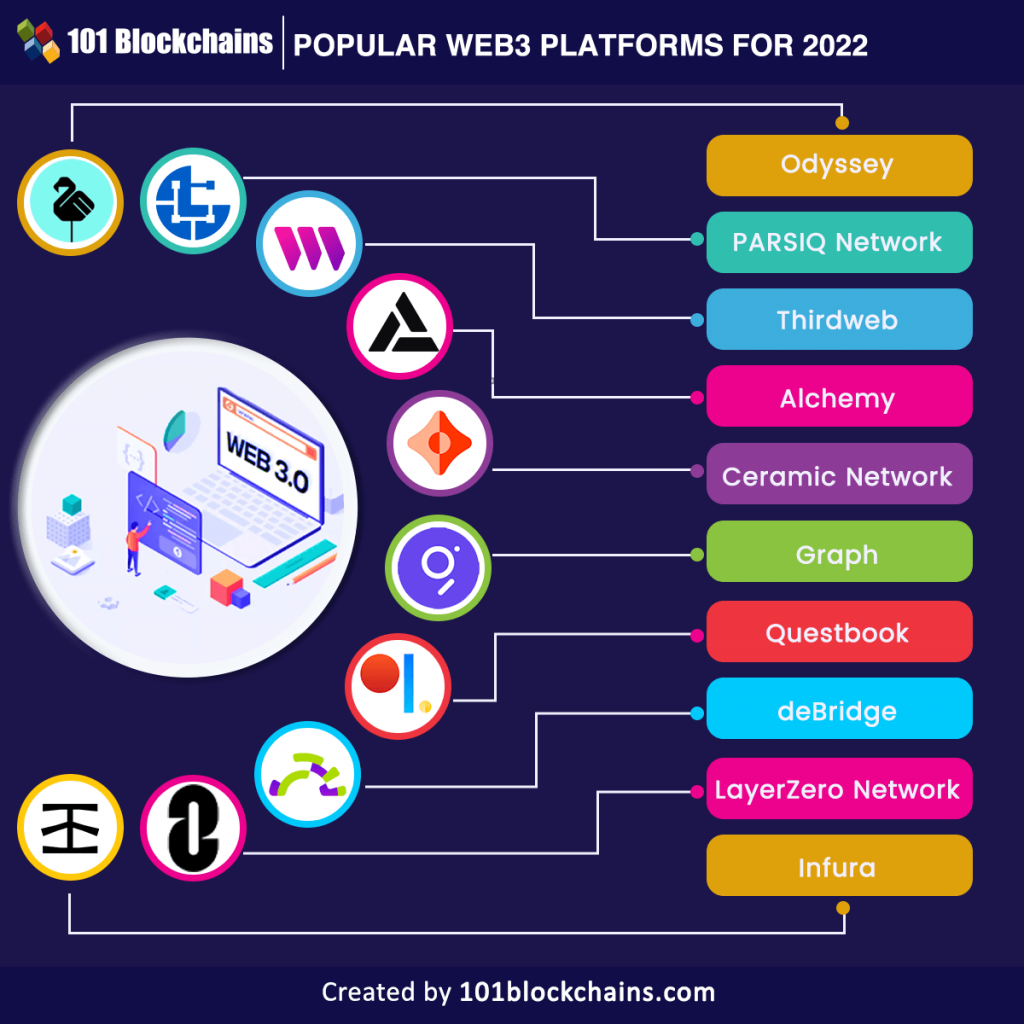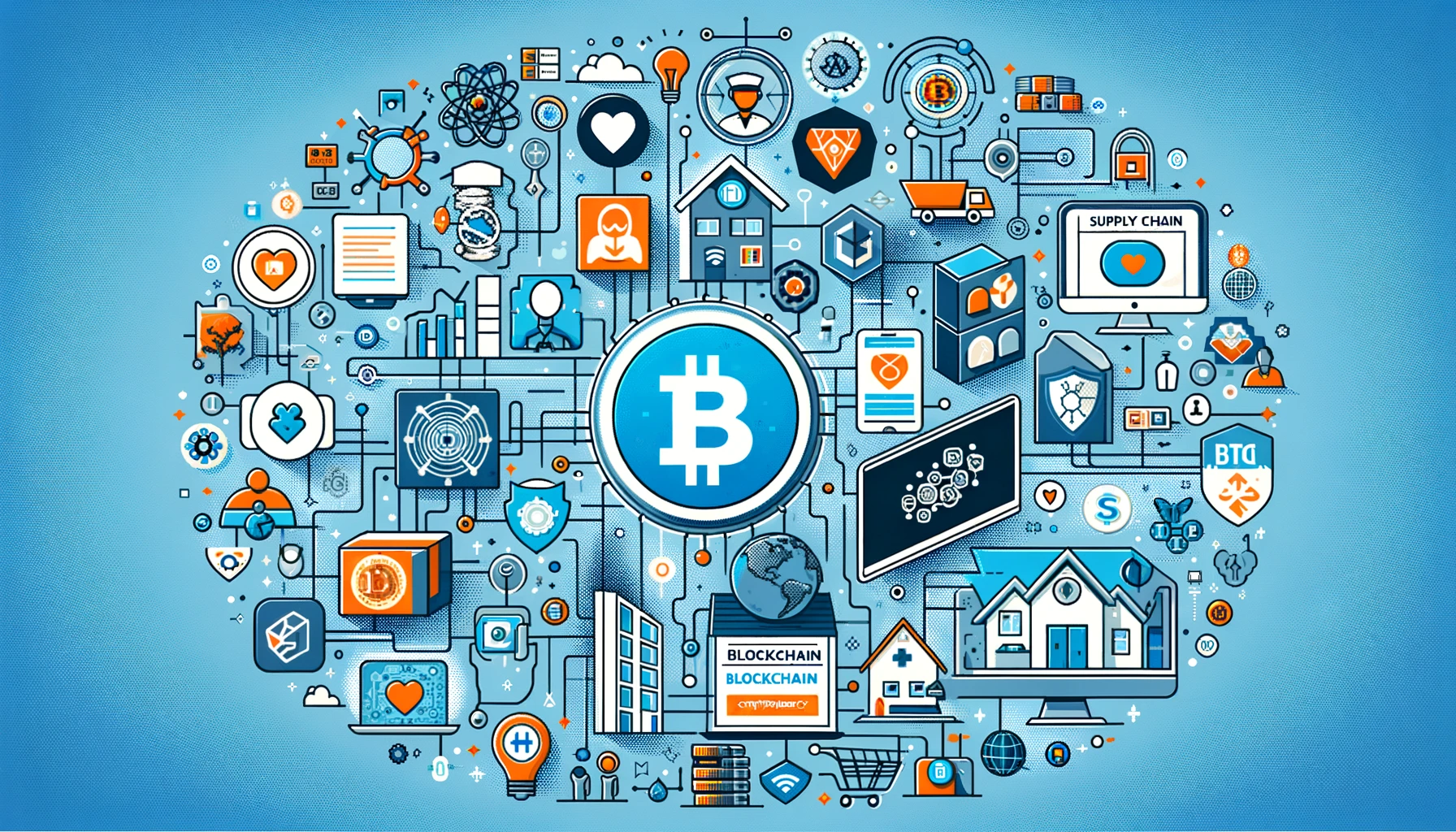
This is a long, SEO-friendly article about Blockchain and Web3, designed to be easy for beginners to understand.
Blockchain & Web3: Unlocking the Future of the Internet and Digital Ownership
Introduction: The Dawn of a New Digital Era
Imagine a digital world where you truly own your data, your online identity, and your digital assets. A world where trust isn’t placed in large, centralized corporations, but in transparent, secure, and distributed networks. This isn’t a distant science fiction fantasy; it’s the core promise of Blockchain technology and Web3.
For many, these terms sound complex, even intimidating. But at their heart, they represent a fundamental shift in how we interact with the internet and manage digital information. From revolutionizing finance to redefining art and gaming, Blockchain and Web3 are laying the groundwork for a more open, secure, and user-centric digital future.
In this comprehensive guide, we’ll break down these powerful concepts, making them easy to understand for anyone curious about the next evolution of the internet. Get ready to explore:
- What Blockchain technology truly is and how it works.
- The evolution from Web1 and Web2 to the decentralized vision of Web3.
- Key technologies and concepts like Cryptocurrencies, NFTs, Smart Contracts, DeFi, and DAOs.
- The profound benefits and exciting potential of this new digital landscape.
- Important challenges and considerations as we move forward.
Let’s dive in!
I. Understanding Blockchain: The Foundation of Decentralized Trust
At its core, Blockchain is a revolutionary technology that acts as a secure, distributed, and unchangeable record of transactions. Think of it as a digital ledger that isn’t stored in one place by one company, but rather is replicated and shared across a vast network of computers worldwide.
What is a Blockchain? The Digital Ledger Analogy
Imagine a traditional ledger, like an accounting book, where every transaction is recorded. In a traditional system, one person or company holds that book. If they wanted to, they could alter an entry without anyone else knowing.
Now, imagine that same ledger, but instead of one copy, millions of copies exist simultaneously, spread across computers all over the globe. Every time a new transaction occurs, it’s added to everyone’s copy of the ledger. If someone tries to change an entry on their copy, all the other copies will immediately detect the discrepancy, making it virtually impossible to tamper with. This is the essence of a blockchain.
Key Components Simplified:
- Blocks: Collections of verified transactions. Once a block is full, it’s added to the chain.
- Chain: Each new block is cryptographically linked to the previous one, forming an unbroken chain. This linkage makes it incredibly difficult to alter past records.
- Distributed Ledger: The ledger (the chain of blocks) is replicated and shared across all participants in the network. There’s no single, central authority.
Core Characteristics of Blockchain Technology
The unique design of blockchain grants it several powerful characteristics that make it so transformative:
-
Decentralization:
- Meaning: No single entity, person, or organization controls the network. Instead, it’s maintained by a global network of computers (nodes).
- Benefit: Reduces the risk of censorship, single points of failure, and malicious attacks. Power is distributed, not concentrated.
-
Immutability:
- Meaning: Once a transaction is recorded on the blockchain and added to a block, it cannot be altered or deleted. It’s permanent.
- Benefit: Creates an undeniable and tamper-proof history of all activities, building unprecedented trust.
-
Transparency:
- Meaning: All transactions on a public blockchain are visible to anyone on the network. While identities are often pseudonymous (represented by an address), the activity associated with that address is public.
- Benefit: Fosters accountability and reduces the need for intermediaries to verify trust. You can see the record for yourself.
-
Security:
- Meaning: Blockchain uses advanced cryptography to secure transactions and link blocks. The distributed nature also means there’s no single target for hackers. To compromise the network, you’d need to control over 51% of the entire network, which is extremely difficult and costly.
- Benefit: Provides a highly secure environment for recording and transferring value and information.
How Does Blockchain Work? (A Simplified Overview)
- A Transaction Occurs: Someone wants to send cryptocurrency, or record data, or execute an agreement.
- Verification: Network participants (often called "miners" or "validators") verify the transaction’s legitimacy based on established rules.
- Block Creation: Verified transactions are grouped together into a "block."
- Hashing & Linking: This new block is given a unique digital fingerprint (a "hash") and is linked to the previous block in the chain using its hash. This creates the secure, chronological chain.
- Distribution & Consensus: The newly added block is broadcast to all computers on the network. These computers update their copy of the ledger, and through a "consensus mechanism" (like Proof of Work or Proof of Stake), they agree that the new block is valid.
This continuous process ensures the integrity and security of the entire blockchain.
II. What is Web3? The Next Evolution of the Internet
To understand Web3, it’s helpful to look at how the internet has evolved.
The Evolution of the Web: From Read-Only to Read-Write-Own
-
Web1 (1990s – Early 2000s): The "Read-Only" Web
- Characteristics: Static websites, primarily for consuming information. Think of it like a digital library. Users were passive consumers.
- Examples: Personal homepages, corporate websites with basic information.
-
Web2 (Early 2000s – Present): The "Read-Write" Web
- Characteristics: Interactive websites and applications where users can create and share content. This is the internet most of us know today.
- Examples: Social media platforms (Facebook, Twitter), user-generated content sites (YouTube, Wikipedia), e-commerce (Amazon).
- The Catch: While users create the content and value, the platforms themselves (Google, Meta, Amazon, etc.) own the data, control the infrastructure, and monetize user activity. They are centralized gatekeepers.
-
Web3 (The Future): The "Read-Write-Own" Web
- Characteristics: A decentralized internet built on blockchain technology, where users have ownership and control over their data, identity, and digital assets. It shifts power from corporations back to individuals.
- Examples: Decentralized applications (dApps), cryptocurrencies, NFTs, decentralized finance (DeFi), DAOs.
- The Promise: A more equitable, transparent, and user-centric internet experience.
Core Pillars of Web3
Web3 isn’t just a buzzword; it’s a vision built upon several fundamental principles:
- Decentralization: As with blockchain, Web3 aims to remove central points of control. Applications and services run on distributed networks, not on single company servers.
- User Ownership: Users genuinely own their digital assets (like NFTs), their data, and even portions of platforms (through tokens) rather than just having temporary access granted by a company.
- Open & Permissionless: Anyone can access and build on Web3 without needing permission from a central authority. There are no gatekeepers.
- Trustless: Participants don’t need to trust each other or a central intermediary. Trust is built into the code and the transparent, immutable nature of the blockchain.
- Interoperability: The vision is for digital assets and identities to seamlessly move between different applications and platforms, rather than being locked into proprietary ecosystems.
In essence, Web3 is about creating an internet where the users and builders collectively own and govern the platforms, rather than a handful of corporations.
III. Key Technologies & Concepts within Web3
Blockchain is the underlying technology, and Web3 is the broader vision for the internet built upon it. Within this ecosystem, several key innovations are driving the change:
1. Cryptocurrency: Digital Money for a Digital Age
What are they?
Cryptocurrencies are digital or virtual currencies that use cryptography for security and operate on a decentralized blockchain network. Unlike traditional money issued by governments (fiat currency), cryptocurrencies are not subject to central bank control.
Why do they matter for Web3?
- Native Payments: They enable direct, peer-to-peer transactions on Web3 platforms without banks or intermediaries.
- Value Transfer: They are the primary means of transferring value and paying for services within Web3 ecosystems.
- Governance: Many cryptocurrencies (often called "governance tokens") give holders the right to vote on the future development of a project or protocol.
Examples:
- Bitcoin (BTC): The first and largest cryptocurrency, primarily seen as digital gold or a store of value.
- Ethereum (ETH): The second largest, powering the Ethereum blockchain which is a foundational layer for many Web3 applications, including smart contracts, NFTs, and DeFi.
2. Smart Contracts: Self-Executing Digital Agreements
What are they?
Smart contracts are self-executing contracts with the terms of the agreement directly written into lines of code. This code resides on a blockchain and automatically executes when predefined conditions are met.
Analogy: Think of a vending machine. You put in money, select a drink, and the machine automatically dispenses it. There’s no human needed to verify your payment or give you the drink. Smart contracts work similarly for digital agreements.
Why do they matter for Web3?
- Automation: They automate processes, removing the need for intermediaries like lawyers, banks, or escrow services.
- Trust & Transparency: Because they are on the blockchain, their execution is transparent, immutable, and tamper-proof.
- Foundation for dApps: Smart contracts are the backbone of most decentralized applications (dApps).
Examples:
- Automatically releasing funds to a freelancer once a task is confirmed complete.
- Facilitating the trade of an NFT once payment is received.
- Managing voting processes in a decentralized autonomous organization (DAO).
3. Decentralized Applications (dApps): Apps Without Central Servers
What are they?
DApps are applications that run on a decentralized peer-to-peer network, typically a blockchain, rather than on a single centralized server owned by a company.
How do they differ from traditional apps?
- Traditional App (e.g., Facebook): Your data is stored on Facebook’s servers. Facebook controls the app’s rules, updates, and your access.
- dApp: The app’s code and data are stored on a blockchain (e.g., Ethereum). No single entity controls it. Users often interact with it directly through a cryptocurrency wallet.
Why do they matter for Web3?
- Censorship-Resistant: Cannot be easily shut down by a single government or corporation.
- Open Source: Often open-source, meaning anyone can audit their code for transparency and security.
- User Control: Users retain more control over their data and assets.
Examples:
- Decentralized Exchanges (DEXs): For trading cryptocurrencies directly with others.
- NFT Marketplaces: For buying and selling non-fungible tokens.
- Blockchain-based Games: Where players truly own their in-game assets.
4. Non-Fungible Tokens (NFTs): Unique Digital Ownership
What are they?
NFTs are unique digital assets stored on a blockchain that represent ownership of a specific item or piece of content, whether digital or physical. "Non-fungible" means it’s unique and cannot be replaced by an identical item (like a dollar bill, which is "fungible").
Analogy: A dollar bill is fungible – one dollar is interchangeable with any other dollar. A unique painting, however, is non-fungible. You can own a print, but only one person can own the original. NFTs bring this concept of unique ownership to the digital realm.
Why do they matter for Web3?
- Digital Ownership: They enable verifiable proof of ownership for digital items (art, music, videos, collectibles, in-game items).
- Creator Economy: Provide new ways for artists and creators to monetize their work directly and retain royalties on future sales.
- Identity & Utility: Can represent digital identity, tickets to events, membership to communities, or provide access to exclusive content.
Examples:
- Digital art (e.g., CryptoPunks, Bored Ape Yacht Club).
- Music tracks, video clips.
- Virtual land in metaverse games.
- Tokenized real-world assets (though less common for beginners).
5. Decentralized Finance (DeFi): Banking Without Banks
What is it?
DeFi is an umbrella term for financial applications built on blockchain technology. It aims to recreate traditional financial services (like lending, borrowing, trading, and insurance) in a decentralized, transparent, and permissionless manner, without the need for traditional banks or financial institutions.
Why does it matter for Web3?
- Financial Inclusion: Accessible to anyone with an internet connection and a crypto wallet, regardless of their location or credit history.
- Transparency: All transactions are recorded on the blockchain, providing unprecedented transparency.
- Efficiency & Lower Fees: Eliminates intermediaries, potentially leading to faster transactions and lower fees.
Examples:
- Decentralized Exchanges (DEXs): Uniswap, PancakeSwap.
- Lending & Borrowing Protocols: Aave, Compound.
- Stablecoins: Cryptocurrencies pegged to the value of a fiat currency (e.g., USD Coin – USDC), providing stability in the volatile crypto market.
6. Decentralized Autonomous Organizations (DAOs): Community-Led Governance
What are they?
A DAO is an organization represented by rules encoded as a transparent computer program, controlled by the organization’s members, and not influenced by a central government. Decisions are made through proposals and voting by token holders.
Why do they matter for Web3?
- Community Governance: Empower communities to collectively manage projects, treasuries, and protocols.
- Transparency & Fairness: All rules and decisions are transparently recorded on the blockchain.
- New Organizational Models: Offer a new way to structure and operate companies, charities, or social groups.
Examples:
- Investment DAOs, grant-giving DAOs, protocol DAOs (governing DeFi projects).
7. The Metaverse & Web3: Interconnected Digital Worlds
How do they intersect?
While the "Metaverse" (persistent, interconnected virtual worlds) isn’t exclusively Web3, blockchain technology and Web3 principles are crucial for realizing its full potential.
- True Ownership: NFTs allow users to truly own their digital assets (avatars, clothing, land) within the metaverse, moving them between different virtual environments.
- Decentralized Identity: Users can have a consistent, self-sovereign digital identity across multiple metaverse platforms.
- Open Economies: Cryptocurrencies facilitate vibrant, user-driven economies within metaverses, allowing for play-to-earn models where players can earn real value.
- Interoperability: Web3 aims for assets and identities to seamlessly transition between different metaverse platforms, preventing walled gardens.
IV. Benefits of Blockchain & Web3: Why This Matters
The shift to a decentralized internet powered by blockchain offers numerous advantages for individuals, businesses, and society as a whole:
-
Enhanced Security & Transparency:
- Benefit: Immutable records and cryptographic security significantly reduce fraud and increase trust in digital transactions and data. Everyone can see the ledger, but no one can change it.
-
User Empowerment & Ownership:
- Benefit: Users gain true ownership of their data, digital assets, and online identities, shifting power away from centralized corporations. No more platforms owning your content or selling your data without your consent.
-
Reduced Intermediaries & Costs:
- Benefit: Smart contracts and decentralized networks can automate processes and eliminate the need for costly middlemen (banks, lawyers, payment processors), leading to lower fees and faster transactions.
-
New Business Models & Innovation:
- Benefit: Opens up entirely new possibilities for creating value, from play-to-earn gaming and fractional ownership of assets to decentralized autonomous organizations and novel funding mechanisms.
-
Global Accessibility & Financial Inclusion:
- Benefit: Anyone with an internet connection can access Web3 services, enabling financial services for the unbanked and fostering global collaboration without geographical barriers.
-
Censorship Resistance:
- Benefit: Because there’s no central point of control, Web3 applications and data are more resilient to censorship and shutdown by governments or corporations.
V. Challenges & Considerations for the Future
While the potential of Blockchain and Web3 is immense, it’s important to acknowledge the challenges that need to be addressed for widespread adoption:
-
Scalability:
- Challenge: Current blockchain networks can sometimes be slow and expensive (e.g., high "gas fees" on Ethereum) compared to traditional centralized systems due to the need for every transaction to be verified across the network.
- Outlook: Significant research and development are underway (e.g., Layer 2 solutions, sharding, new consensus mechanisms) to improve transaction speed and capacity.
-
Energy Consumption (for some Blockchains):
- Challenge: "Proof of Work" blockchains (like Bitcoin) consume a large amount of energy due to the computational power required for mining.
- Outlook: Many newer blockchains and upgrades (like Ethereum’s move to Proof of Stake) are significantly more energy-efficient, and the industry is actively working towards sustainable solutions.
-
Regulatory Uncertainty:
- Challenge: Governments worldwide are still grappling with how to regulate cryptocurrencies, NFTs, and other Web3 technologies, leading to a complex and sometimes unpredictable legal landscape.
- Outlook: Clarity in regulation will be crucial for institutional adoption and mainstream trust.
-
User Experience (UX) & Complexity:
- Challenge: Interacting with Web3 currently requires technical understanding (e.g., managing crypto wallets, understanding gas fees, seed phrases), which can be a barrier for mainstream users.
- Outlook: Developers are constantly working on more intuitive interfaces and simplified onboarding processes to make Web3 as easy to use as Web2.
-
Security Risks & Scams:
- Challenge: While the underlying blockchain technology is secure, user errors (losing private keys), smart contract vulnerabilities, phishing scams, and fraudulent projects remain significant risks.
- Outlook: Continuous education, improved security practices, and better auditing tools are essential to protect users.
Conclusion: Stepping into a Decentralized Tomorrow
Blockchain and Web3 represent more than just technological advancements; they embody a philosophical shift towards a more open, equitable, and user-centric digital world. From fundamentally changing how we transfer value with cryptocurrencies to enabling true digital ownership with NFTs, and fostering new forms of organization with DAOs, these technologies are laying the groundwork for the next generation of the internet.
While challenges remain, the innovation, creativity, and problem-solving within the Web3 space are moving at an incredible pace. As we continue to build out this decentralized future, understanding these core concepts will be essential for navigating and participating in the digital landscape of tomorrow.
The internet is evolving, and with Web3, you’re not just a passive consumer – you have the opportunity to be an owner, a builder, and a participant in a truly decentralized digital revolution. The future is being built, block by block.



Post Comment